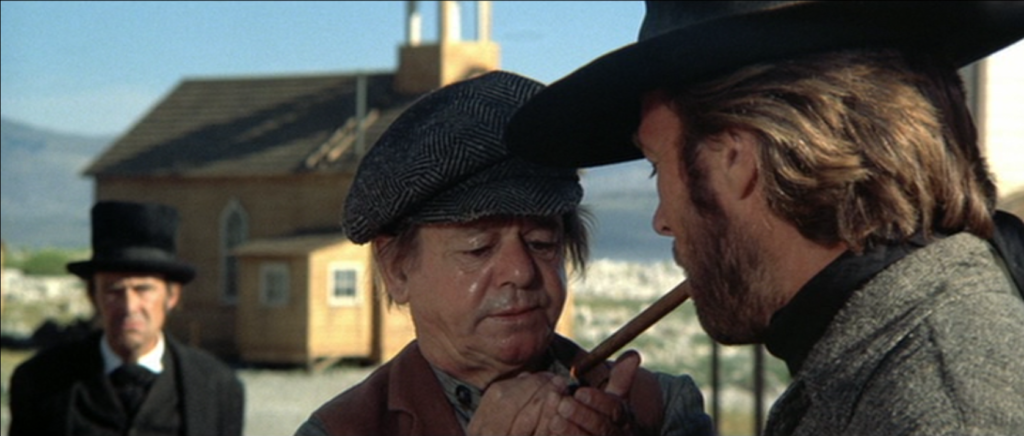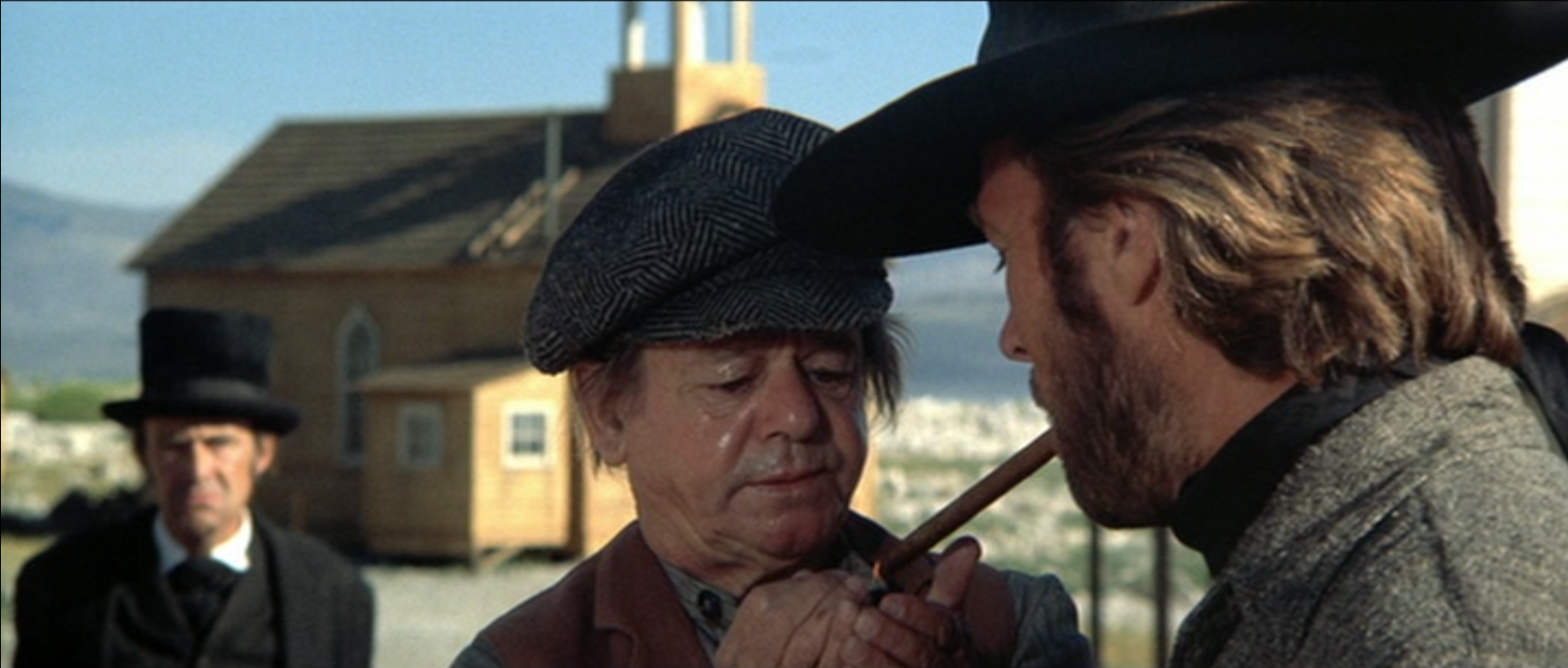Movie Review: High Plains Drifter (1973) directed by Clint Eastwood
The people of Lago are in fear. And perhaps they have good reason for it. A year ago, three outlaws whipped the town marshal to death in the street of this tiny lakeside mining town. They were caught and imprisoned for an entirely different crime, vowing vengeance on the townsfolk they felt betrayed them. Those outlaws are about to be released from prison. Lago’s town council had hired three bully boys to protect them against the incoming outlaws, but today a stranger (Clint Eastwood) came to town. When the bullies tried their luck with him, the stranger proved himself deadlier with a gun.

Next, town prostitute Callie Travers (Marianna Hill) deliberately bumps into the stranger and is exceptionally rude to him, apparently under the impression that “negging” will make him want her services. He rapes her, and even though this is plainly happening in broad daylight, the townsfolk do nothing. Having established that the stranger is able to do exactly as he pleases without fear of consequences, the townsfolk decide to hire this gunslinger as their new protector.
The stranger agrees to the fee of “anything you want”, among other things appointing little person Mordecai (Billy Curtis), the odd-job man, the new combination sheriff and mayor. But the people of Lago have no idea how high the price they’re paying actually is, for the stranger is even more than he seems, and he rides a pale horse.
This was Clint Eastwood’s second go at being a solo director, and his first time directing himself in a Western. While it draws on what he learned from his work with Sergio Leone, and his character has no name, the Stranger is definitely not the same person as The Man with No Name from those films. This man is deliberately cruel and following an agenda of vengeance.
Exactly who or what the Stranger is, is never directly stated in the movie. There are hints of the supernatural about him, but they’re not confirmed. The dead marshal is played by Buddy van Horn, Clint Eastwood’s long-time stunt double, to set up a strong resemblance. But if the stranger is the marshal’s brother (as in early versions of the script) how does he know so much about what happened and who the people of the town are? How does he pull off some of those tricks? On the other hand, if he’s the marshal’s ghost or some other supernatural being (the Devil? the personification of Death?), he’s an awfully earthy ghost, eating, drinking, smoking and having sex.
As it happens, the outlaws have a genuine beef with the townsfolk of Lago, as the death of the marshal was no whim on their part. The dark secret of the village is that everyone there was either complicit in the marshal’s death or stood by and let it happen. Their corruption and cowardice continue into the present day, which is how the Stranger is able to cow them into doing whatever he wants.
His choice of Mordecai as his sidekick is not just an insult to the townsfolk, either. While Mordecai is also no prize, puffing himself up with his borrowed authority, and also a cowardly bystander, he becomes a reliable ally to the stranger, and in the end finds his inner grit.
Make no mistake, there are no “good” people in this story. The outlaws are just as evil as you’d expect people who whipped a man to death to be, the townsfolk are backstabbing cowards (with a couple of minor exceptions), and the Stranger is monstrous. (The stranger is a bit kinder to Native Americans and Mexicans who are just visiting Lago.)
The directing is okay, but Mr. Eastwood would get a lot better over the years. He did very well in choosing the set design though, having all the Lago buildings built on the shore of Lake Mono in California so they could be repainted and destroyed as the script called for. The colors and flames make the climax of the film appropriately hellish in appearance.
Content note: A lot of violence, much of it lethal. People are shot, stabbed, hanged and whipped to death. The stranger commits rape on screen (no nudity) and never actually suffers consequences for it. Extramarital sex. Shirtless man. Verbal blasphemy and some other rough language. A bit of racism. This was an R-rated film for a reason, and even older teens might blanch.
This is very much a “revisionist” Western, and John Wayne hated it. There’s a bit of the Kitty Genovese murder in here, and other concerns of the 1970s buried in the subtext. Recommended to fans of violent Westerns with murky morality.

